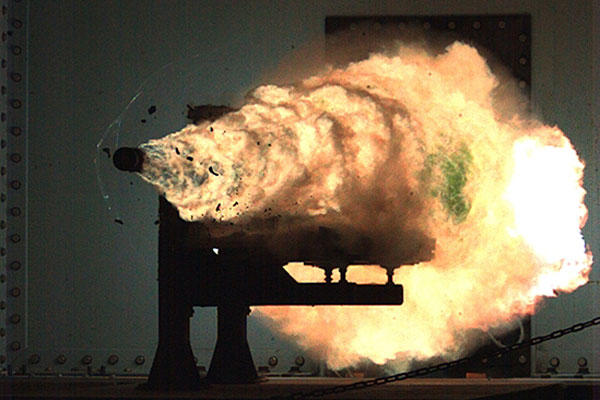An aggressive effort to make the U.S. Navy more lethal and efficient will include experiments with new uses for missiles and application of new rail gun technology to smaller weapons systems, the service's director of surface warfare said Tuesday.
Amid a rapidly changing global environment in which Navy technology was fast being outpaced, Read Adm. Peter Fanta said the service was adopting a philosophy of increased lethality and "three ways to kill everything."
"I realize that might not be the nicest way to talk about things, but folks, our job is to kill people and break their toys," he told an audience at the annual Surface Navy Association symposium near Washington, D.C. "There's nothing else in the world that matters."
Among projects in the works for the Navy is the development of new gun rounds, including the possibility of a smaller version of the electromagnetic projectile launching technology used by the rail gun weapon now in development. The rail gun, which can hurl a projectile at well over 5,000 miles per hour, is being evaluated for possible mounting on a Zumwalt-class destroyer by the mid-2020s.
"When we take that projectile with the rail gun, why not make it small enough to put in a five-inch round ... with a couple of hundred five-inch rounds that now can shoot something as far, almost as accurately as a rail gun?" Fanta suggested.
While he said some of Navy's testing and evaluation efforts were classified, Fanta said the service was looking at new rounds for existing weapons in the fleet that were based on "leap-ahead technologies" such as the rail gun.
"We're learning to build how we're operating, how we're testing and we're developing those capabilities in the rail gun and we're expanding that to the rest of the fleet," he said. "It would be a shame if we took all that science and all that engineering and just left it for the science project that will become operational in the future instead of tacking as much as we can onto the current weapon."
And development of new rounds was just one line of effort in a push to get more out of the Navy's weapons.
Fanta also reaffirmed plans to install an over-the-horizon surface-to-surface missile on a littoral combat ship later this year, an effort he first announced last October. He referred to an early 2015 experiment in which a Tomahawk cruise missile launched from a destroyer hit a moving target at sea. Why, he asked, could the system not be adapted to find moving targets on land as well?
"I got it, it's not perfect, it doesn't meet the ideal ... [but] let's change the payloads, let's change the sensors, we've done this already," Fanta said.
"This is not aspirational," he added. "This is operational."
--Hope Hodge Seck can be reached at hope.seck@monster.com.





























